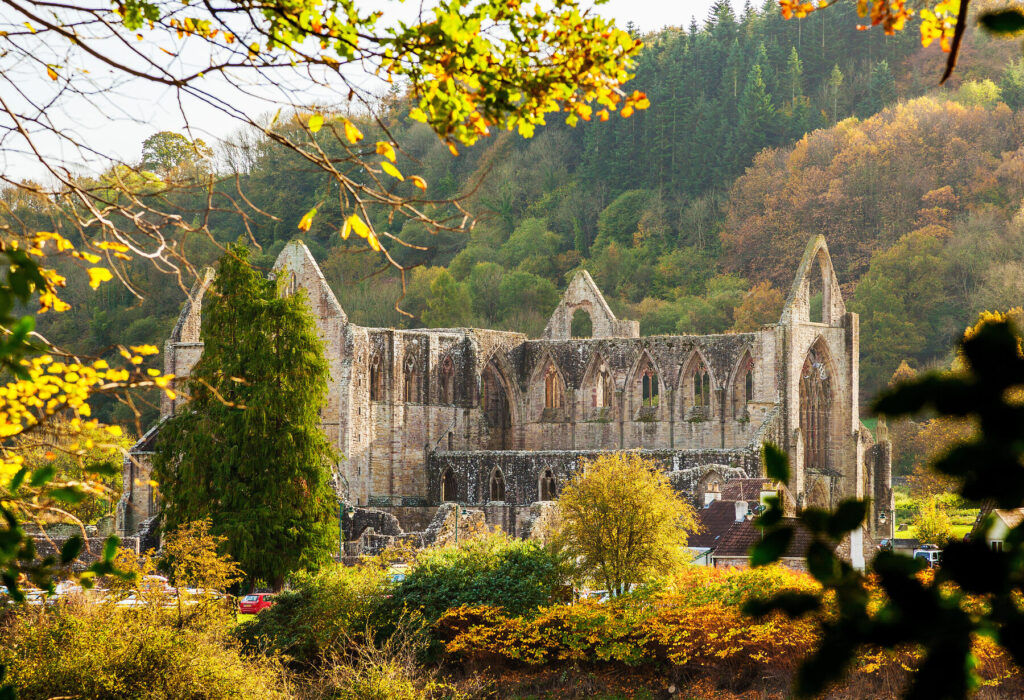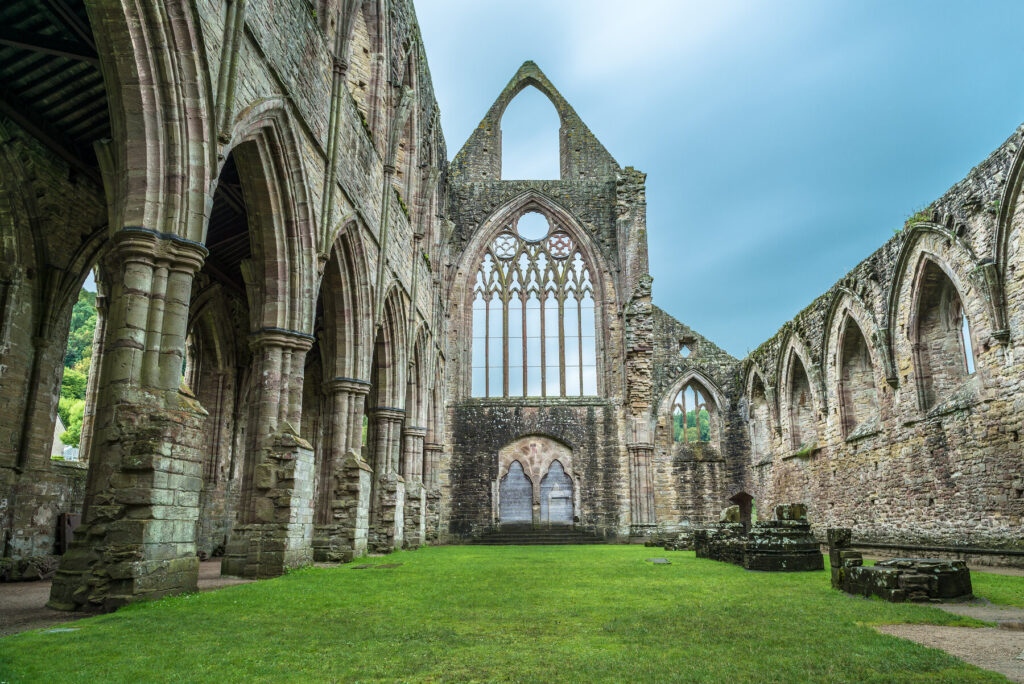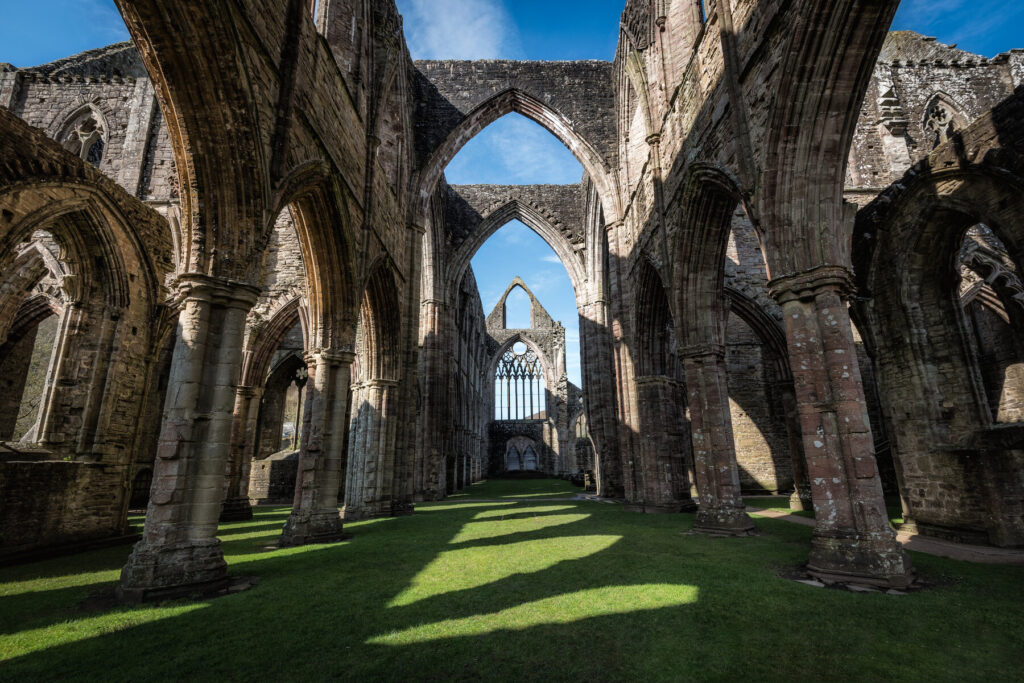No matter how many times you see it, Wales’s Tintern Abbey is always a majestic sight, and it’s little wonder that this place has inspired writers, painters and poets over the centuries, from the likes of Snyed Davies who extolled the glory of the abbey ruins in his 1745 poem, Describing a Voyage to Tintern Abbey, in Monmouthshire, from Whitminster in Gloucestershire, to Turner and Wordsworth, both of whom were frequent visitors.
Founded by Walter FitzRichard of Clare in 1131, Tintern was only the second Cistercian house in Britain after Waverley in Surrey (1128), and initially home to 13 choir monks from l’Aumône in Normandy, in addition to the abbot. The abbey’s subsequent patronage included the Earl of Pembroke, William Marshal I and the Bigod Earls of Norfolk.

Consecrated in 1301, this ushered in a period of great prosperity for the abbey, which lasted until 3 September 1536 when it was surrendered to Henry VIII’s officials following the dissolution of the monasteries. Appropriated by Henry Somerset, Earl of Worcester, many of the monastic buildings were subsequently employed as cottages and workshops for labourers from the nearby wire and ironworks.
Inside the abbey
Beyond the reception, the path leads straight ahead to the Warming House, which, kitchen aside, was the only part of the abbey permitted a fire. After hours spent between the icy chill of the church, cloisters and dorms, this would have offered welcome respite for the monks.
The Warming House is flanked on one side by the Day Room (aka Novices’ Hall) – where monks would engage in various tasks such as writing manuscripts – and on the other by the refectory, a deceptively large space whose ornate stone doorway and slender window columns hint at its former splendour; you can still see the serving hatch adjoining the kitchen and the chute for dispensing waste.

Collectively these quarters were among the first buildings constructed here at Tintern, around the mid 13th century. A later, 14th-century addition to the complex was the abbot’s residence, which ranged across an extensive area northeast of the church and comprised a house (note the fireplace), hall and chamber, the latter with its own private chapel, in keeping with the abbot’s high status.
The rest of the site is consumed by the knee-high remains of the infirmary buildings, comprising hall, kitchens and cloister. Almost a mini monastery in itself, this is where the needs of the sick and elderly monks would have been attended to. Seek out, too, the extant drain, an ingenious example of medieval water management.
The church
Constructed in the shape of a cathedral, the church is the abbey’s great glory and one of the finest specimens of Gothic architecture in Britain, if not Europe.
Upon entering the church through the mighty west front, whose skeletal seven-light window retains its exquisite stone tracery, Coxe commented that ‘the eye passes rapidly along a range of elegant gothic pillars…from the length of the nave, the height of the walls, and the aspiring form of the pointed arches, first impressions are those of grandeur and sublimity.’

Bar the roof, an almost entire shell remains, and yet despite being stripped of almost all its ornamentation, it exudes a befitting sense of authority. Beyond the six bays that comprise the high and wide three-aisled nave, four massive cross-arms mark the divide between the nave and presbytery, and the north and south transepts.
Travel to Tintern Abbey
Bus #69 does the run between Chepstow and Monmouth, stopping at Tintern en route; the main stop is outside the Wild Hare, though the bus does stop elsewhere within the village, so if you’re bound for the Old Station, for example, you can get off there.
There are usually eight or nine buses per day in either direction on weekdays, four on Saturdays and none on Sundays.